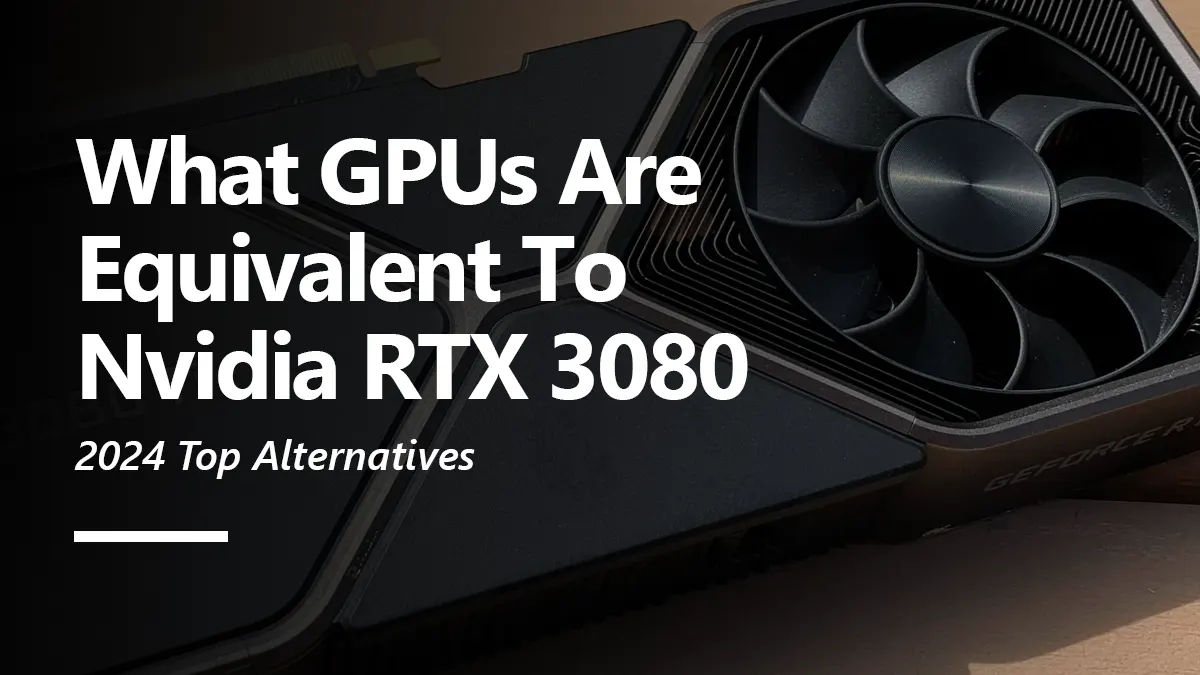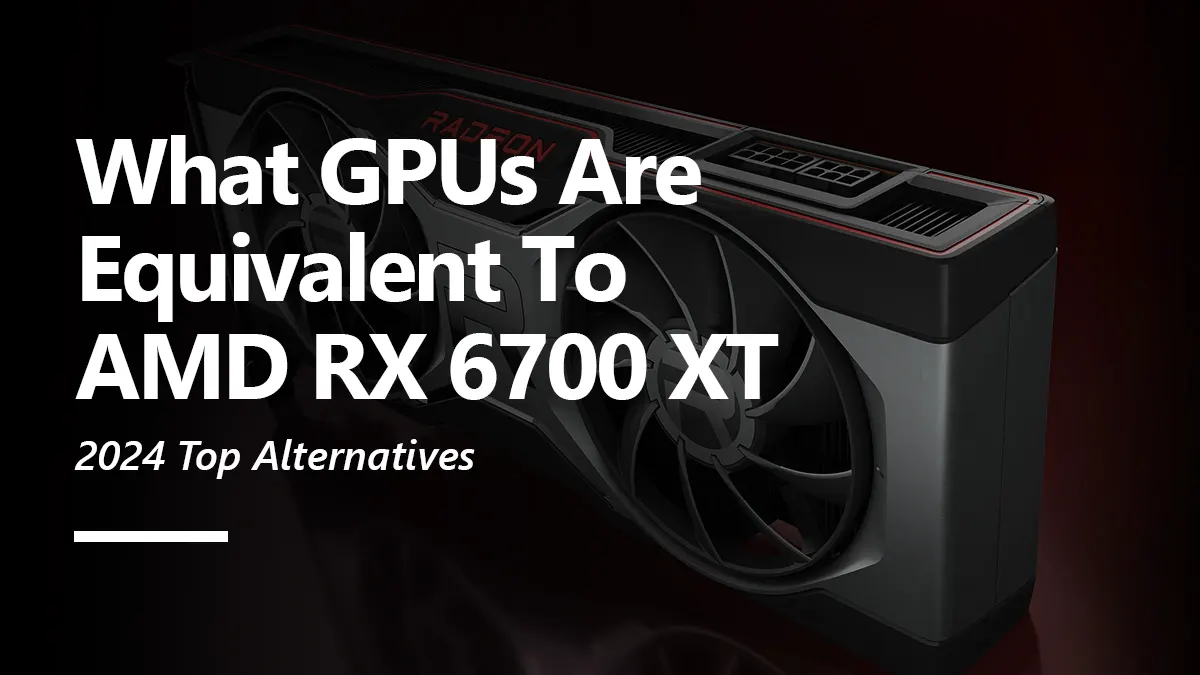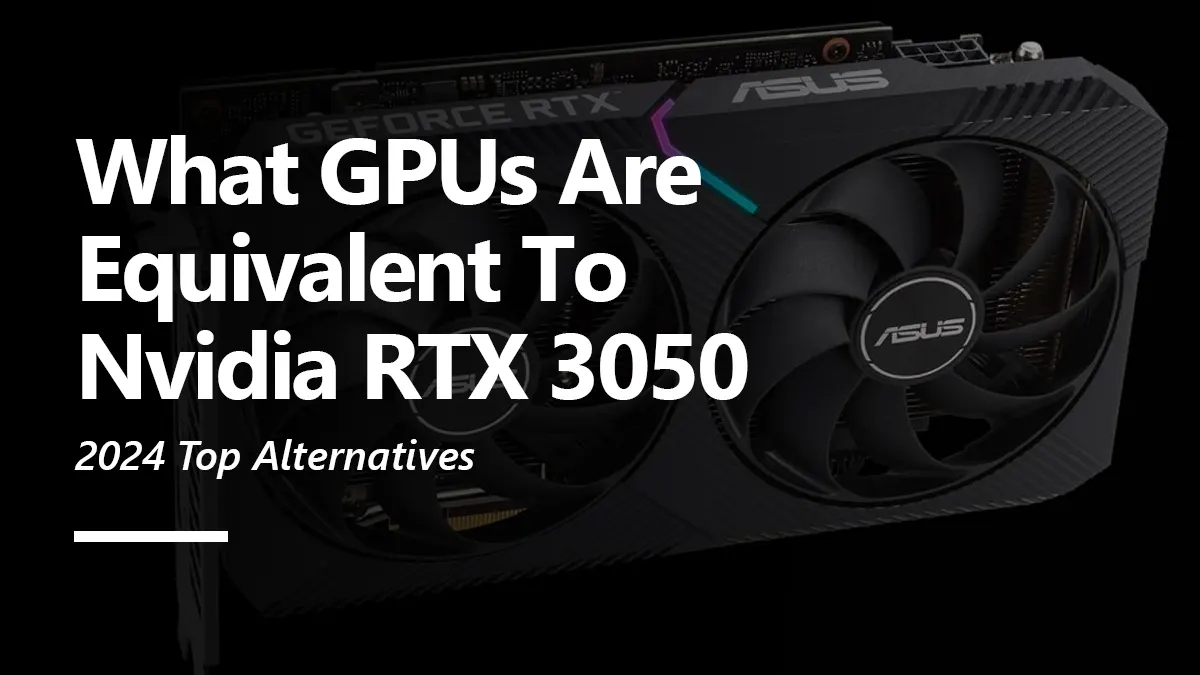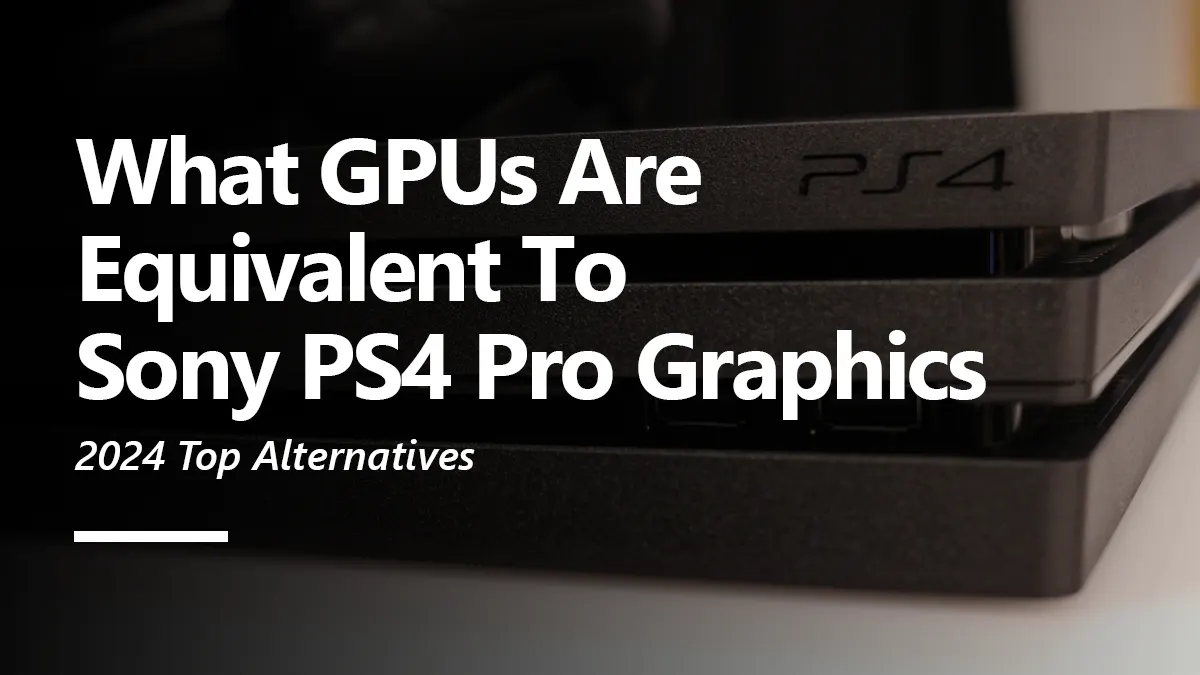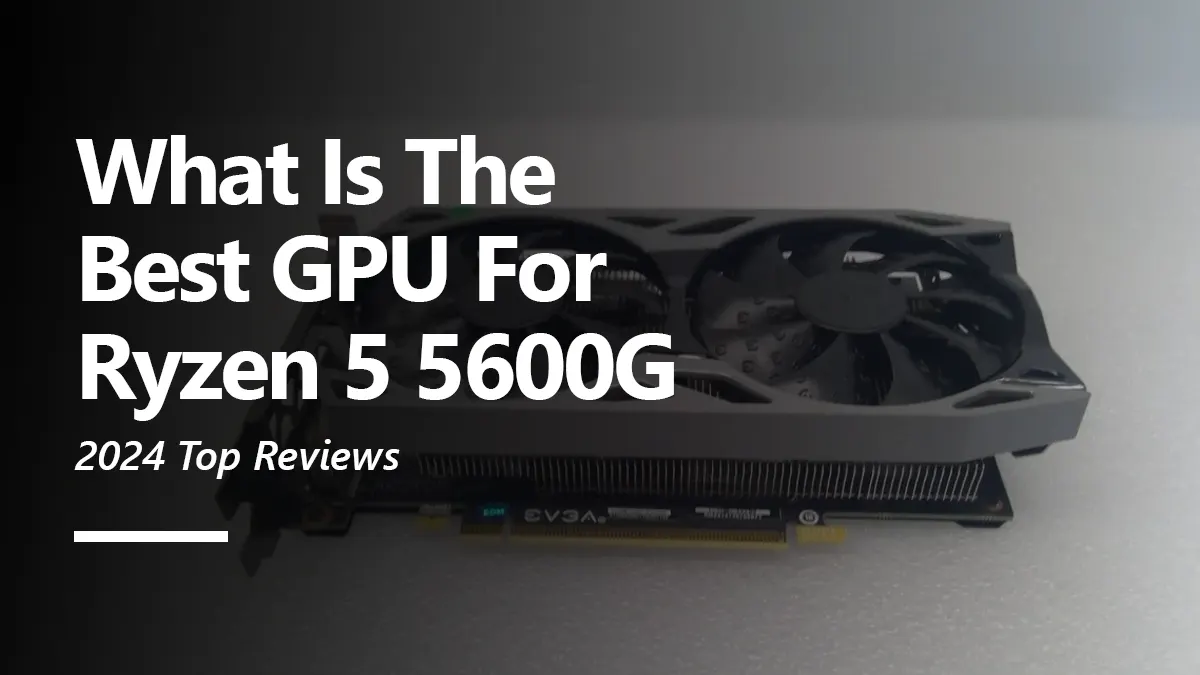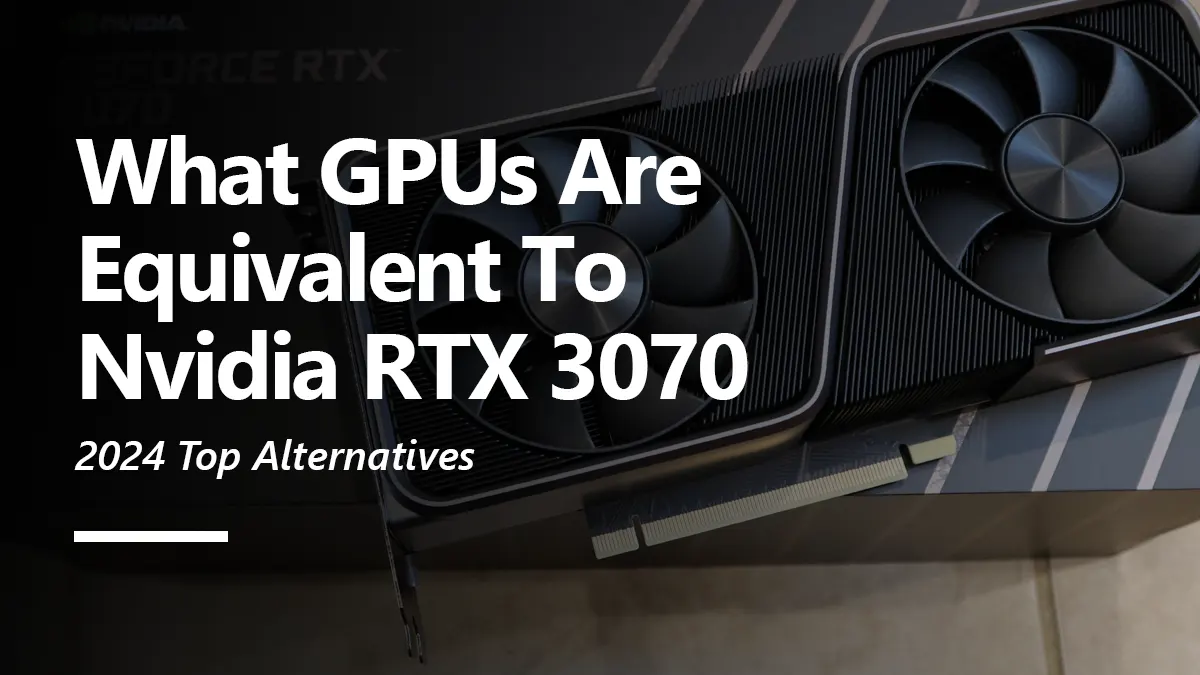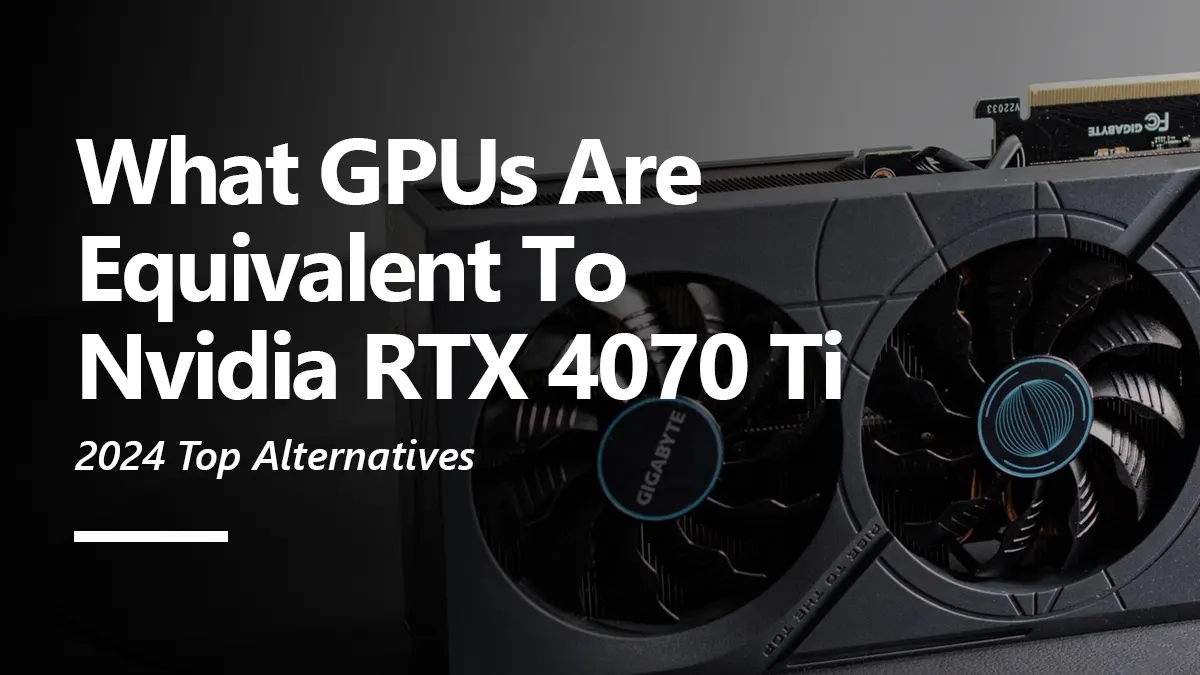The RTX 3080 is respected among the iconically most well-known graphics cards of its generation. It is ranked among the best GPUs for high-end gaming systems. Ever since its launch it has cemented itself for its excellent performance output for up to 4K resolution, which is still pretty convenient after three years.
Due to its tremendous usefulness, 3080 isn’t an easy one to get. With extensive price increases over the past few years, the RTX 3080 still goes at 700 – 850$, depending on the variant. So, it is only natural to look for other alternative GPUs that can also deliver parallel effectiveness.
Although the 3080 has a measly 10GB VRAM for a high-end GPU, it manages smooth graphics with its fantastically 1.7 GHz clocked and optimized 8700 CUDA cores homogenous with 272 Tensor and 68 ray tracers. Also, it has a faster than usual memory, with transfer rates peaking at almost 800 Gigabytes per second.
Given these criteria, we present two substantive options that will pose worthy competition to the 3080.
GPU equivalent to the RTX 3080
The AMD RX 6800 and Team Green’s newest addition to its lineup, RTX 4070, pose a severe challenge to the RTX 3080. Both cards are pretty similar to the 3080 in performance. Despite the relatively notoriously awful raytracing of the RX 6000 series cards, the 6800 can stand its ground and sometimes manage a superior performance. Anyway, let’s see how these alternatives achieve these feats and what they offer in front of the 3080.
ASRock RX 6800 Phantom
Almost doubling the VRAM of the RTX 3080, the RX 6800 boasts a 16 gig memory with a boost speed of 2.1 GHz. This specimen utilizes the Radeon DNA 2 microarchitecture to its fullest and combines AMD’s most coveted attributes to pull tremendous framerates.
Although it is mostly overshadowed by its “XT” version, the RX 6800 still holds much power to put a powerful output on display. It achieves incredible performance with characteristics like 60 AMD’s ray acceleration engines with 60 compute units and almost four thousand shading processors.
It is slightly slower but capable of 4K outputs and runs several 2023 titles like a piece of cake. Moreover, its pricing is way more reliable and polite, quickly attracting a keen eye.
| Feature | ASRock RX 6800 Phantom Gaming D OC | NVIDIA GeForce RTX 3080 |
|---|---|---|
| Architecture | RDNA 2.0 | Ampere |
| Core Clock (MHz) | 1850 MHz (+9%) | 1440 MHz |
| Boost Clock (MHz) | 2190 MHz (+4%) | 1710 MHz |
| CUDA Cores | 3840 | 8704 |
| Memory Type | GDDR6 | GDDR6X |
| Memory Size (GB) | 16 GB | 10 GB |
| Memory Bus Width (bits) | 256 bit | 320 bit |
| Memory Speed (Gbps) | 2000 MHz16 Gbps effective | 1188 MHz19 Gbps effective |
| TDP (Watts) | 250 W | 320 W |
| DirectX Version | 12 Ultimate (12_2) | 12 Ultimate (12_2) |
| OpenGL Version | 4.6 | 4.6 |
| VR Ready | - | - |
| Ray Tracing Cores | 60 | 68 |
| Ports | 1x HDMI 2.1 3x DisplayPort 1.4a | 1x HDMI 2.1 3x DisplayPort 1.4a |
| Price | $713.91 | $367.71 |
Gigabyte RTX 4070 Eagle OC
Looking for a trendier alternative for the RTX 3080, then you will be delighted with the RTX 4070. This GPU combines the power of the 3080 with the newly introduced power efficiency of the Ada Lovelace architecture. It promotes excellent framerates with its highly tuned cores and Twelve Gig video memory capacity.
The 4070 works on Nvidia’s graceful and refined recent formula, instigated by an amalgam of 5888 Shading cores, 46/184 next-gen RT, and Tensor cores. It adds a hefty 2.5 GHz clock speed to the mix that further augments the performance to deliver a flagship-like gaming experience.
By flagship, we mean flagship because the RTX 4070, with its initial 600$ price tag, is among the best options for entry-level 4K capable graphics cards. The 4070 is decorated with exclusive features (i.e., DLSS 3.0, etc.) that work as a cherry on top.
| Feature | GIGABYTE RTX 4070 EAGLE OC | NVIDIA GeForce RTX 3080 |
|---|---|---|
| Architecture | RDNA 2.0 | Ampere |
| Core Clock (MHz) | 1920 MHz | 1440 MHz |
| Boost Clock (MHz) | 2505 MHz (+1%) | 1710 MHz |
| CUDA Cores | 5888 | 8704 |
| Memory Type | GDDR6X | GDDR6X |
| Memory Size (GB) | 12 GB | 10 GB |
| Memory Bus Width (bits) | 192 bit | 320 bit |
| Memory Speed (Gbps) | 1313 MHz 21 Gbps effective | 1188 MHz19 Gbps effective |
| TDP (Watts) | 200 W | 320 W |
| DirectX Version | 12 Ultimate (12_2) | 12 Ultimate (12_2) |
| OpenGL Version | 4.6 | 4.6 |
| VR Ready | - | - |
| Ray Tracing Cores | 46 | 68 |
| Ports | 1x HDMI 2.1 3x DisplayPort 1.4a | 1x HDMI 2.1 3x DisplayPort 1.4a |
| Price | $803.65 | $367.71 |
Conclusion
With these parallel-performing graphics cards to the RTX 3080, you have a high probability of achieving a similar output. In the case of the RX 6800, we should address the fact that you won’t get a good raytracing experience.
Besides that, it is an excellent alternative with the bonus of lower power consumption. However, the RTX 4070 is the best among the three in terms of power efficiency as it only requires around 200W compared to the 250W and 320W of the RX 6800 and RTX 3080, respectively.
Nevertheless, it doesn’t matter which one you choose because all GPUs have their trade-offs. Their performances are identical, and with minor hiccups here and there, any one of the three would be a stellar addition to your system.
Frequently Asked Questions
How much power do I need for the RTX 3080?
The RTX 3080 has a rated TDP of 320W, meaning it will consume 320 Watts of power at its peak state, excluding overclocking. Moreover, to efficiently support an RTX 3080 on your system, you will need a decently designed PSU of 700W as a bare minimum.
Can RTX 3080 run 4K 120FPS?
Yes. The RTX 3080 was marketed as a high-end GPU capable of 4K gaming. As of 2023, it can easily afford most games with a 4K 120FPS mark and would suffice for the future.
